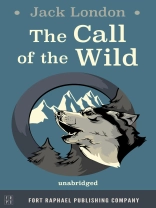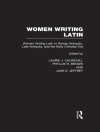‘The Call of the Wild’ is writer Jack London’s first novel and the enormous popularity of the book put London on the literary map and propelled him to worldwide fame.
London spins the tale of a dog named Buck, a powerful St. Bernard mix, who lives a pampered life in California until he is stolen and sold into servitude as a sled dog in the frozen Yukon. Quickly adapting to his new surroundings, Buck survives a bitter rivalry with a fellow sled dog and becomes lead dog himself. But as he becomes more accustomed to life in the tundra, Buck begins to yearn for freedom and a life among his canine brethren in the wild.
A breakthrough novel when it was first serialized in 1903, ‘The Call of the Wild’ has become a literary classic and has been adapted to the screen numerous times. It is presented here in its original and unabridged format.
About the author
Jack London was the pen name of John Griffith Chaney, an American novelist, journalist and social activist. Enormously popular, London was one of the first American writers to become internationally famous and wealthy from his writing alone. Born in 1876, young Jack was the illegitimate child of Flora Wellman and William Chaney. Chaney, however, refused to accept that he was the boy’s father and after his mother remarried Civil War veteran John London, Jack took his father’s last name as his own. When Jack tried to reach out to his biological father and was rejected, he quit school at the University of California at Berkeley and headed off into the Klondike to try his luck as a fortune hunter.While London did not succeed in the gold fields (he, in fact, suffered from many health problems while in the Klondike), his experiences in the frozen north gave him plenty of fodder for the stories to come. When he returned to America, he began writing short stories and selling them to magazines, swiftly earning an impressive income. In 1903, he sold his book ‘The Call of the Wild’ to The Saturday Evening Post for $750 and the book rights to Macmillan and the book became a huge publishing success. From then on, London enjoyed an almost unprecedented career as a popular writer.London alternated between stories of nature and adventure – such as ‘White Fang’ and ‘The Sea Hawk’ – and books about society and the future (even dabbling in science fiction) in such books as ‘The Iron Heel’ and ‘The Scarlet Plague.’ London never stopped advocating for the rights of both workers and animals and was a fierce pro-union socialist.London also suffered from severe health issues including dysentery, uremia and late-stage alcoholism. In almost constant pain towards the end of his life, London became addicted to morphine and opium, ultimately dying from a number of complicating factors in 1916 at the age of forty.





![Cover of Bernadette Andrea: Grace Norton [Gethin] and Frances (Freke) Norton Cover of Bernadette Andrea: Grace Norton [Gethin] and Frances (Freke) Norton](https://static.worldofdigitals.com/thumb_webp/264/9781351932264.webp)






